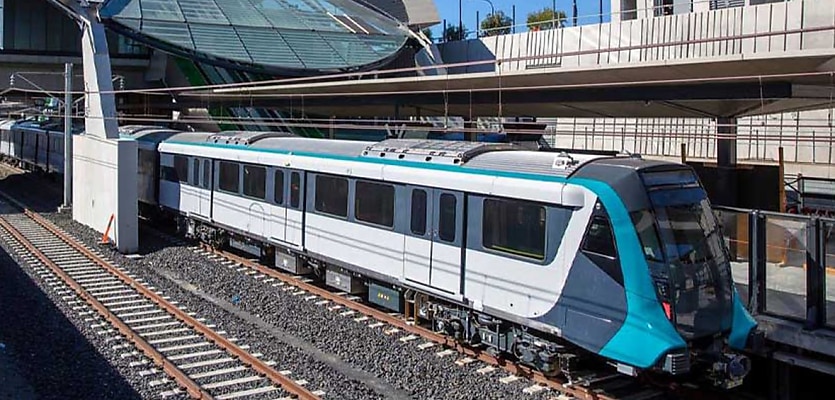Train access is increasingly shaping the face of Australian neighbourhoods, according to new research.
A report out from KPMG shows that more than a third of new dwellings built across Australia’s four largest capital cities over the last 15 years were built within a kilometre of a train station.
Moreover, the report also found the trend was growing, with new builds increasingly clustered around these transit hubs as developers responded to the desire for public transport access.
Of the 1.5 million new homes built in Sydney, Melbourne, Brisbane, and Perth between 2006 and 2021, 35 per cent were within a kilometre of a train station, according to KPMG’s data.
In Greater Sydney, nearly half (49 per cent) of the city’s 430,000 new dwellings were built within 1 kilometre of a train station.
Greater Melbourne produced 565,000 additional dwellings, of which 35 percent were located within a 1 kilometre radius of a station, while Brisbane’s borders became home to 273,000 additional dwellings over the period, with 28 percent located within 1 kilometre of a station. Perth produced 239,000 additional dwellings, with 16 per cent located in close proximity to train access.
Housing development within 1 kilometre of a train station in Greater Sydney grew particularly strongly between 2016 and 2021. Almost 110,000 new dwellings were built, compared with less than 60,000 in the previous five-year period. Melbourne, Brisbane and Perth all saw a growth in the number of dwellings built close to train stations between 2016 and 2021, as opposed to the years prior.
Terry Rawnsley, an urban economist at KPMG, said it was clear that train stations were important when approaching the critical issue of housing supply.
“Our analysis highlights that long-term precinct planning policies can have a positive impact by clustering jobs and services near a major train station,” Mr Rawnsley said.
Examples of new development fronts that have opened up in conjunction with rail line construction include the Mandurah Line in Western Australia; rail extensions on the Gold Coast; the Regional Rail Link in Victoria; and the Northwest Rail Link in Sydney.
In Sydney, a long-term focus on centres such as Parramatta, Penrith, Campbelltown and Liverpool, has created what Mr Rawnsley called a “polycentric” pattern of housing development around the city’s train stations.
In contrast, Greater Melbourne has experienced much more of a monocentric development pattern in the inner suburbs, as have Brisbane and Perth, with train station development concentrated in the inner suburbs and in some coastal locations.
“The analysis shows that the housing markets vary within each city and that in the area surrounding each train station, there is a need for appropriate land use planning and place-making initiatives to ensure that housing, local services and infrastructure is provided to help attract new housing developments,” Mr Rawnsley said.
The Property Council of Australia is keenly aware of the ability of transit to spur development, which is why the body recently stressed the importance of keeping Sydney’s Metro project on track.
It comes on the heels of the NSW government’s announcement that it would be launching an independent review into the program following news that the new rail link was $21 billion over budget and, in some cases, five years behind schedule.
The NSW Minns government said in a statement that the review planned to “examine delivery models, project governance and passenger impacts and the best way to resuscitate Sydney’s major transport infrastructure pipeline”.
Property Council’s acting Western Sydney director, David White, urged the review to consider how any changes to the project would impact the city’s housing.
“Connectivity is a key priority for Western Sydney. We must see these projects as more than just railways, but enablers of growth, connectivity and drivers of improvement to our quality of life,” he said.
If anything, he said the review should consider a slight expansion of the plans.
“A review should consider whether or not it is too late to pursue a new stop at Camellia in line with previous calls from the Property Council and Business Western Sydney.”
ABOUT THE AUTHOR
Juliet Helmke
Based in Sydney, Juliet Helmke has a broad range of reporting and editorial experience across the areas of business, technology, entertainment and the arts. She was formerly Senior Editor at The New York Observer.







You are not authorised to post comments.
Comments will undergo moderation before they get published.